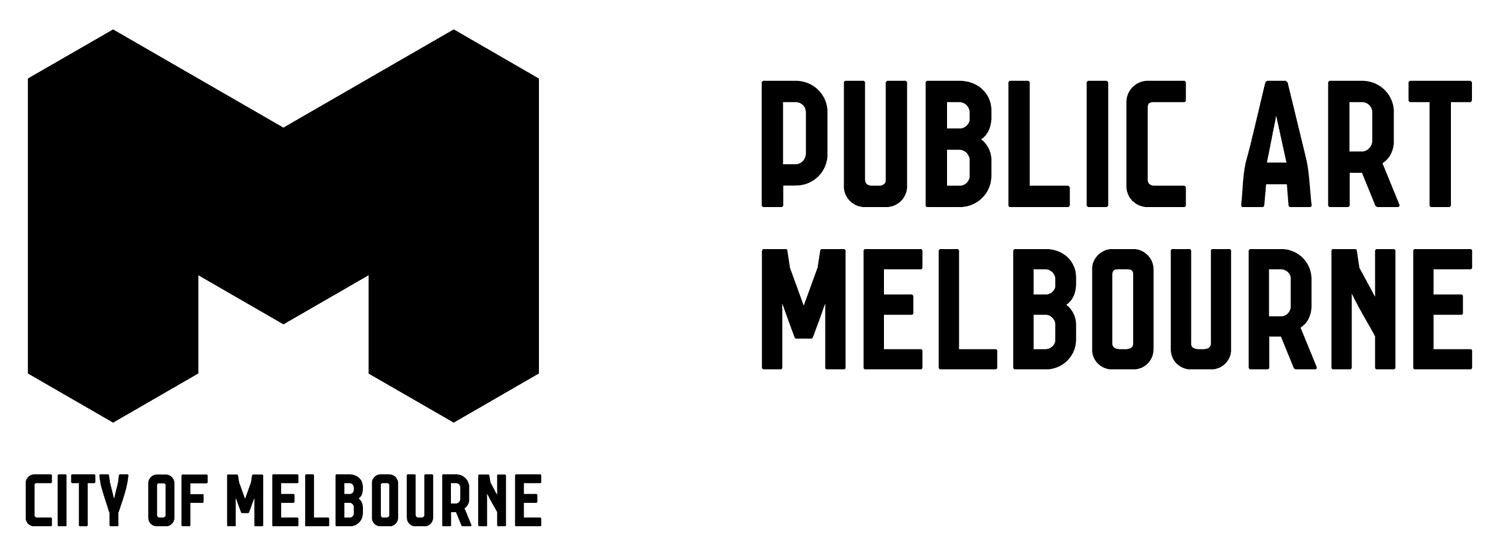Steven Rhall, Gesture (70º East) New Day Rising (detail). Photo by Bryony Jackson.
Day two started with the sun beaming down on the Queen Victoria Market. Steven Rhall's installation, Gesture (70º East) New Day Rising, was up and the sun moved across it, marking the movement of light, and instilling into viewers the skewed directions with which the marketplace sits within the city grid. Rhall’s work draws attention to the ways in which bodies were oriented in the former cemetery on which the Queen Victoria Market exists, and that orientation in conjunction with the natural lay of the land, reflected by the Hoddle Grid. Steven tells us that the Hoddle Grid (named after its creator, colonial surveyor Robert Hoddle), is somewhat of an anomaly in the otherwise north-south-east-west oriented Melbourne city planning as it runs parallel with the Birrarung (Yarra River). He says, of his work that:
"That shifting of otherwise Euro or Christian way of responding to landscape is not only acknowledging the site's deeper history, but also the history of the site as a cemetery and the First Nations people that were interred here without the ritual or ceremony afforded to them otherwise. The work is activated in two main ways - one by the sun coming through and then split up by the diagonal beams in the roof to fall on the ground plane, to form various parallelograms on that ground plane that shift in scale as the sun moves. It's very much dictated by time and temporality. But it's also about placing audience in the present. It's also activated for every individual person who goes into the space and looks up into the mirrors. Through that, they see themselves as part of the work." - in conversation with Steven Rhall, Oct 2016
Drawing by Kenny Pittock.
Detail from A Centre for Everything's Visible Hands. Photo by Bryony Jackson.
The work is subtle, quite, contemplative. Tuesday was the first day of trade at the markets, while Biennial Lab is activated. A Centre for Everything’s Visible Hands saw participants travel through the markets, communicating with various stallholders, using unspoken hand gestures to communicate codes not only with the stallholders, but also between themselves. When trying to buy a juice from Market Juice stallholder, Rocco, you notice that he’s not selling, but teaching through gesture. Passing his knowledge through a game.
The Mechanics Institute's Trade School in progress. Photo by Sarah Werkmeister.
The Mechanics Institute held their first series of workshops as part of their work, Trade School, which saw artist Anastasia Klose, and Burke & Lavarack deliver more conversational teachings than staunch sermons. In small groups, the trade school functions as an exploration into the many different facets of trade, not only in the Queen Victoria Market, but beyond and into the world-wide circulation of value, both cultural and monetary.
Read a creative response to Biennial Lab from Adelaide-based artist and previous Melbourne Laneway-commissioned artist, John Borley, who took part in Mechanics Institute's Trade School here.
Depiction of The Mechanics Institute's Trade School. Drawing by Kenny Pittock.
- Sarah Werkmeister






